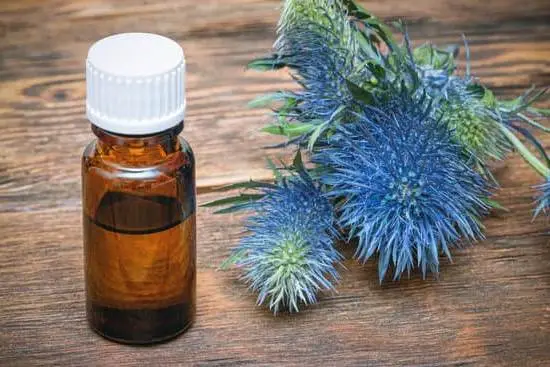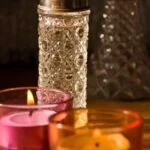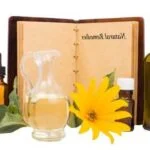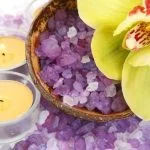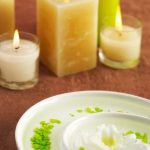Aromatherapy body treatment is a holistic healing approach that utilizes essential oils to promote physical, mental, and emotional well-being. This article delves into the power of aromatherapy and explores the myriad benefits it offers to individuals seeking relaxation, rejuvenation, and overall wellness.
The use of essential oils in aromatherapy body treatment can be traced back to ancient civilizations, where plant extracts were used for their therapeutic properties. Over time, this practice has evolved, and today, it is widely recognized for its ability to reduce stress, alleviate anxiety, enhance mood, relieve pain, and improve skin health.
Understanding the science behind aromatherapy is crucial in comprehending how essential oils affect the body and mind. Research has shown that these concentrated plant extracts have the potential to impact the limbic system in the brain, which plays a key role in emotions, memory, and behavior. Additionally, when applied topically or inhaled through diffusers or steam therapy, essential oils can have a direct influence on various physiological processes.
Understanding the Origins
Aromatherapy, the use of essential oils for therapeutic purposes, has a rich and ancient history that dates back thousands of years. The practice of aromatherapy body treatment can be traced to various cultures such as ancient Egypt, China, India, and Greece. These early civilizations utilized aromatic plant extracts for medicinal, spiritual, and cosmetic purposes. For instance, in ancient Egypt, aromatic oils were used in religious ceremonies, embalming practices, and for their healing properties.
In ancient India and China, essential oils were incorporated into traditional medicine systems such as Ayurveda and Traditional Chinese Medicine to promote physical and emotional well-being. The Greeks also played a significant role in the development of aromatherapy by utilizing aromatics in massage therapy and personal care. Through trade routes and cultural exchange, the use of essential oils spread throughout the world, leading to the diverse range of aromatic traditions we have today.
Today’s modern practice of aromatherapy body treatment has evolved from these ancient traditions. While many aspects of its historical origins remain intact, contemporary aromatherapists continue to explore new methods for harnessing the healing powers of essential oils for holistic wellness. Whether through diffusing scents in the air or incorporating them into massages and baths, the legacy of aromatherapy continues to thrive as an effective way to promote relaxation and overall health.
- Origins of Aromatherapy
- Ancient Egypt
- China
- India
- Greece
- Historical Use
- Medicinal
- Spiritual
- Cosmetic
- Evolution
- Modern Practice
- Contemporary Aromatherapists’ Methods
The Science Behind Aromatherapy
Aromatherapy has been practiced for centuries and is based on the belief that the inhalation or topical application of essential oils can provide therapeutic benefits. The science behind aromatherapy involves the physiological and psychological effects of these aromatic compounds on the body and mind. Essential oils are highly concentrated plant extracts that have been found to have various medicinal properties, including anti-inflammatory, antibacterial, and even analgesic effects.
Physiological Effects
When essential oils are inhaled, they enter the body through the olfactory system, which is directly connected to the brain. The molecules of the oils stimulate the olfactory nerves, sending signals to the limbic system, which is responsible for emotions, behavior, and memory. This process can lead to physiological responses such as lowered heart rate, reduced stress levels, improved digestion, and even pain relief.
Psychological Effects
In addition to their physiological effects, essential oils also have psychological effects on an individual’s mood and mental state. Certain aromas have been shown to promote relaxation, reduce anxiety, enhance focus and concentration, uplift spirits, and improve overall well-being. These psychological benefits make aromatherapy an effective complementary therapy for various mental health conditions such as anxiety disorders and depression.
Understanding Bioactivity
The bioactivity of essential oils is attributed to their chemical composition, with each oil containing a unique combination of volatile compounds that contribute to their therapeutic properties. For example, lavender oil contains linalool and linalyl acetate, which are known for their sedative effects. On the other hand, peppermint oil contains menthol, which has analgesic and anti-inflammatory properties. Understanding the bioactivity of different essential oils plays a crucial role in harnessing their benefits for aromatherapy body treatment.
Choosing the Right Essential Oils
Understanding Essential Oil Properties
Essential oils are derived from various plant sources, including flowers, herbs, and fruits. Each oil possesses unique properties that contribute to its therapeutic benefits. For example, lavender essential oil is well-known for its calming and relaxing effects, making it ideal for relieving stress and promoting better sleep. On the other hand, peppermint essential oil has invigorating and refreshing properties that can help alleviate fatigue and enhance mental clarity.
Considering Individual Preferences and Needs
When choosing essential oils for aromatherapy body treatment, it’s important to consider individual preferences and specific wellness goals. Some individuals may prefer floral scents, while others may enjoy citrus or woody aromas. Additionally, those seeking relief from specific conditions such as anxiety or muscle pain may benefit from selecting oils with targeted therapeutic properties.
Sourcing High-Quality Oils
To ensure the effectiveness of aromatherapy body treatment, it’s essential to source high-quality essential oils. Look for reputable suppliers that offer pure, organic oils free from synthetic additives or contaminants. While high-quality oils may come at a slightly higher price point, their potency and purity make them a worthwhile investment in reaping the full benefits of aromatherapy body treatment.
Considering these factors when selecting essential oils will allow individuals to create personalized blends that cater to their specific needs and preferences for an effective aromatherapy body treatment experience.
The Aromatherapy Body Treatment Process
Aromatherapy body treatment is a holistic approach to health and wellness that utilizes essential oils to promote physical, mental, and emotional well-being. The process of aromatherapy body treatment involves a step-by-step guide that ensures a relaxing and rejuvenating experience for the individual receiving the treatment.
The first step in the aromatherapy body treatment process is the selection of the essential oils. It is important to choose high-quality oils that are suitable for the specific needs and preferences of the individual. Whether it’s lavender for relaxation, peppermint for invigoration, or eucalyptus for respiratory relief, the right essential oils play a crucial role in the overall success of the treatment.
Once the essential oils are chosen, the next step is their application to the body. This can be done through massage, inhalation, or diffusion. Massage is a popular method for delivering aromatherapy body treatments as it allows for both physical and sensory benefits.
The application of essential oils through massage helps relax tight muscles, reduce stress, and improve circulation while also allowing for deep inhalation of the aromatic molecules. Inhalation and diffusion methods can also be used depending on the desired effect and individual preference.
Another important aspect of the aromatherapy body treatment process is creating a soothing environment. This includes dim lighting, calming music, and comfortable temperature to enhance relaxation and maximize the therapeutic effects of the essential oils. By following this step-by-step guide, individuals can fully experience a truly relaxing and rejuvenating aromatherapy body treatment.
| Aromatherapy Step | Description |
|---|---|
| Selection of Essential Oils | Choose high-quality oils based on individual needs |
| Application to Body | Utilize massage, inhalation or diffusion methods |
| Create Soothing Environment | Enhance relaxation with dim lighting, calming music, and comfortable temperature |
Aromatherapy Techniques
When it comes to aromatherapy body treatments, there are various techniques for applying and using essential oils to achieve the desired benefits. Whether you are looking to relax, improve your mood, or alleviate physical discomfort, understanding these techniques can help you make the most of your aromatherapy experience.
Here are some popular methods for application and use of essential oils:
- Diffusion: This method involves using a diffuser to disperse essential oils into the air, allowing you to inhale the aroma. Diffusion is great for creating a calming or invigorating atmosphere in your home or workplace.
- Topical Application: Applying essential oils directly to the skin is a common practice in aromatherapy body treatments. Before applying any oil to your skin, it’s important to dilute it with a carrier oil to prevent irritation. Popular areas for topical application include pulse points, temples, and the bottoms of the feet.
- Inhalation: Inhaling essential oils can have a direct impact on your respiratory system and overall well-being. You can add a few drops of oil to a bowl of hot water and breathe in the steam, or use a personal inhaler for on-the-go aromatherapy.
By familiarizing yourself with these techniques, you can tailor your aromatherapy body treatment to suit your specific needs and preferences. Whether you prefer the soothing effects of diffusion or the targeted application of topical oils, there is a method that is perfect for every individual seeking the benefits of aromatherapy.
Aromatherapy Body Treatments for Specific Conditions
Aromatherapy has long been used as a natural remedy for addressing various physical and mental health concerns. When it comes to specific conditions such as stress, anxiety, pain, and skin issues, aromatherapy body treatments can be particularly effective in providing relief and promoting overall well-being.
For individuals dealing with stress and anxiety, using essential oils such as lavender, chamomile, and bergamot can help calm the mind and reduce feelings of tension. These oils can be diffused in the air, added to bath water, or used in massage oils to create a soothing and relaxing atmosphere. Additionally, inhaling these calming scents through aromatherapy body treatments can have a direct impact on the nervous system, promoting a sense of peace and tranquility.
In terms of pain management, certain essential oils have been found to possess analgesic properties that can help alleviate discomfort. Oils like peppermint, eucalyptus, and rosemary have cooling effects that can provide relief from headaches, muscle aches, and joint pain when used in aromatherapy body treatments. Whether applied topically or inhaled through steam inhalation, these oils can offer natural pain relief without the side effects often associated with traditional medications.
When it comes to addressing skin issues such as acne, eczema, or dryness, incorporating essential oils like tea tree oil, geranium, or lavender into skincare routines can be beneficial. These oils contain antimicrobial and anti-inflammatory properties that can help improve the condition of the skin when used in aromatherapy body treatments. Whether added to facial steams or blended into lotions and creams, these essential oils can support skin health while providing a delightful sensory experience.
The Future of Aromatherapy
As the popularity of aromatherapy body treatment continues to grow, there are several exciting innovations and trends on the horizon that are shaping the future of this practice. One notable trend is the incorporation of technology into aromatherapy, with the development of devices that disperse essential oils through advanced methods such as ultrasonic diffusion or nebulization.
These cutting-edge techniques ensure that the therapeutic benefits of essential oils can be effectively and efficiently delivered, enhancing the overall experience of aromatherapy body treatments.
Furthermore, there is an increasing focus on personalized aromatherapy experiences, where the selection of essential oils and treatment methods are tailored to individual preferences and needs. By recognizing that each person may respond differently to specific scents and techniques, practitioners are able to create customized treatments that provide maximum benefits for their clients. This approach not only enhances the effectiveness of aromatherapy body treatments but also empowers individuals to take a more active role in their wellness journey.
In addition, there is a growing demand for sustainable and ethically sourced essential oils, driven by a heightened awareness of environmental conservation and social responsibility. As consumers become more conscious of the origins of their products, there has been a shift towards utilizing oils that are obtained through eco-friendly and ethical means.
This emphasis on sustainability reflects a broader movement towards holistic well-being, where individuals seek to align their personal care practices with principles of environmental stewardship and ethical sourcing. With these exciting innovations and trends shaping the future landscape of aromatherapy body treatment, it is clear that this ancient practice continues to evolve and adapt to meet the diverse needs and preferences of contemporary society.
Frequently Asked Questions
What Is Full Body Aromatherapy?
Full body aromatherapy involves using essential oils to promote overall well-being and relaxation by applying the oils to the entire body through methods such as massage or baths. This practice aims to enhance both physical and emotional health.
What Illness Does Aromatherapy Treat?
Aromatherapy is often used to treat a variety of illnesses and conditions, including stress, anxiety, headaches, insomnia, muscle pain, digestive issues, and respiratory problems. Different essential oils are selected based on their specific properties that may help alleviate symptoms.
What Is Medical Aromatherapy?
Medical aromatherapy is a specialized form of aromatherapy that is used in clinical settings to complement traditional medical treatments. It involves the use of essential oils under the guidance of trained healthcare professionals to address specific health concerns and support patients’ overall well-being during their treatment.
This approach focuses on using essential oils as part of an integrative healthcare plan rather than as a standalone treatment method.

Are you looking for a natural way to improve your health and wellbeing?
If so, aromatherapy may be the answer for you.

